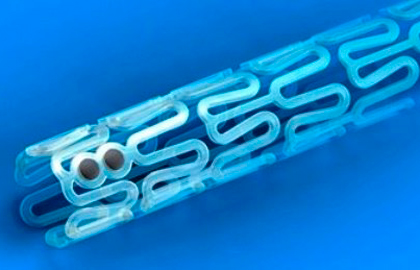
This is a prospective single-center registry assessing ABSORB performance in lesions representative of the daily practice, such as:
- Calcified lesions
- Total occlusions
- Long lesions
- Small vessels
Inclusion criteria were patients presenting with non ST elevation MI, stable or unstable angina or silent ischemia caused by de novo stenotic lesions in native coronary arteries.
Primary end point were major adverse cardiovascular events (MACE) defined as a composite of:
- Cardiac death
- Acute myocardial infarction
- Target vessel revascularization
Between September 2012 and January 2015, 249 patients with 335 lesions were included. The mean number of scaffolds per patient was 1.79 ± 1.15. Invasive imaging was used for scaffold implantation in 39% of patients.
Mean follow up was 622 days (376 a 734). Using Kaplan-Meier, at 18 months:
- MACE rate was 6.8%.
- Cardiac death rate was 1.8%.
- AMI rate was 5.2%.
- Target lesion revascularization rate was 4.0%. Scaffold definite thrombosis rate was 1.9%.
Conclusion
In complex patients and lesions, the ABSORB resorbable scaffold showed acceptable performance at long term. There were no cases of early thrombosis.
Original Title: Mid- to Long-Term Clinical Outcomes of Patients Treated With the Everolimus-Eluting Bioresorbable Vascular Scaffold. The BVS Expand Registry.
Reference: Cordula M. Felix et al. J Am Coll Cardiol Intv. 2016;9(16):1652-1663.
We value your opinion. You are more than welcome to leave your thoughts, comments, questions or suggestions here below.



